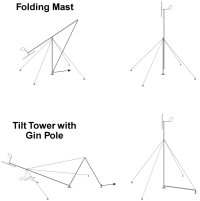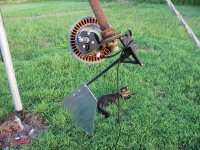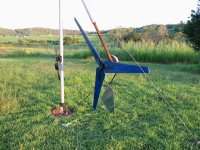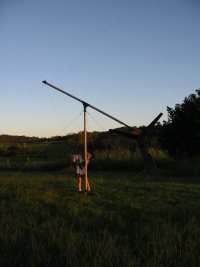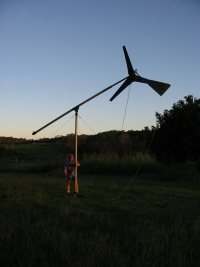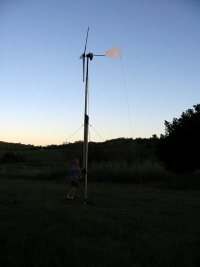|
|
|
|
 Print Print |
|
|
| Windmill Kit, no longer supplied.. |
|
Tail Assembly
| With the windmill
bearing plate secured level ( normal operating position
) in a vice, slide on the tail assembly. It should point
directly backwards from the propeller. Viewed from behind
the windmill, the tail assembly will rotate to the left
and up. Clamp the tail in place and mark the three drill
holes in the end of the tail arm using the tail fin as
a template. Make sure the tail is vertical. Drill the
holes and bolt on the tail, again making sure the tail
is vertical. |
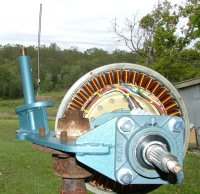 |
Tail Rope. Tie a length of 5mm+ rope to the end of the tail. This
is used to pull the windmill out of the wind, or unwind
the drop wire every few days, depending on how often
the wind changes direction in your location. Use a tennis
ball on the end of the rope, cut off at about chest
height ( once the windmill is up in the air ).
Yawn Adjustment. The tail can
be adjusted to yawn at higher wind speeds by adding
weight to the tail. |
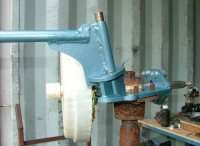 |
| Final
Assembly |
| Bolt a 3 phase rectifier
( from a old car alternator, click here for more info ) to the bearing plate. The rectifier needs
to be in a open location where it will be cooled by the
wind. Run 3 wires from the stator connections to the rectifier
AC connectors, use 4mm core or better wire. Run 2 wires,
black and red ( - & + ) from the DC out of the rectifier.
This is the Drop Wire, and needs to be long enough to
at least reach the ground from the top of your windmill
tower. Secure the drop wire to the bearing plate with
cable ties, allow a little slack to the rectifier. |
| Mast
Suggestions |
Below are suggestions for mounting your
windmill. There are many links on the internet about
mast design and location. I prefer to use a folding
mast, as it makes windmill maintenance or repair easy.
You windmill needs to be in a open location, away from
or above any building, trees, or anything that may affect
the wind.
Do not mount the windmill on the roof
of your house! The Fisher & Paykel stator generates
a cogging vibration when spun. This vibration travels
down the mast, and can be felt in the ground several
feet from the mast base. If you were to mount this windmill
on your roof, the noise will be unbearable.
We highly recommend talking to your
local structural engineer about your windmill mast.
They will be able to recommend footing requirements
and design, mast construction and any local council
requirements. You local council may require you to apply
for a permit.
But as a rule, build your mast stronger
than you need to. There is nothing more scary that watching
you own windmill during a storm and praying that it
hangs together, and nothing more rewarding when it does. |
|
Next
- Electrical |
|
|
|
|
|
|



